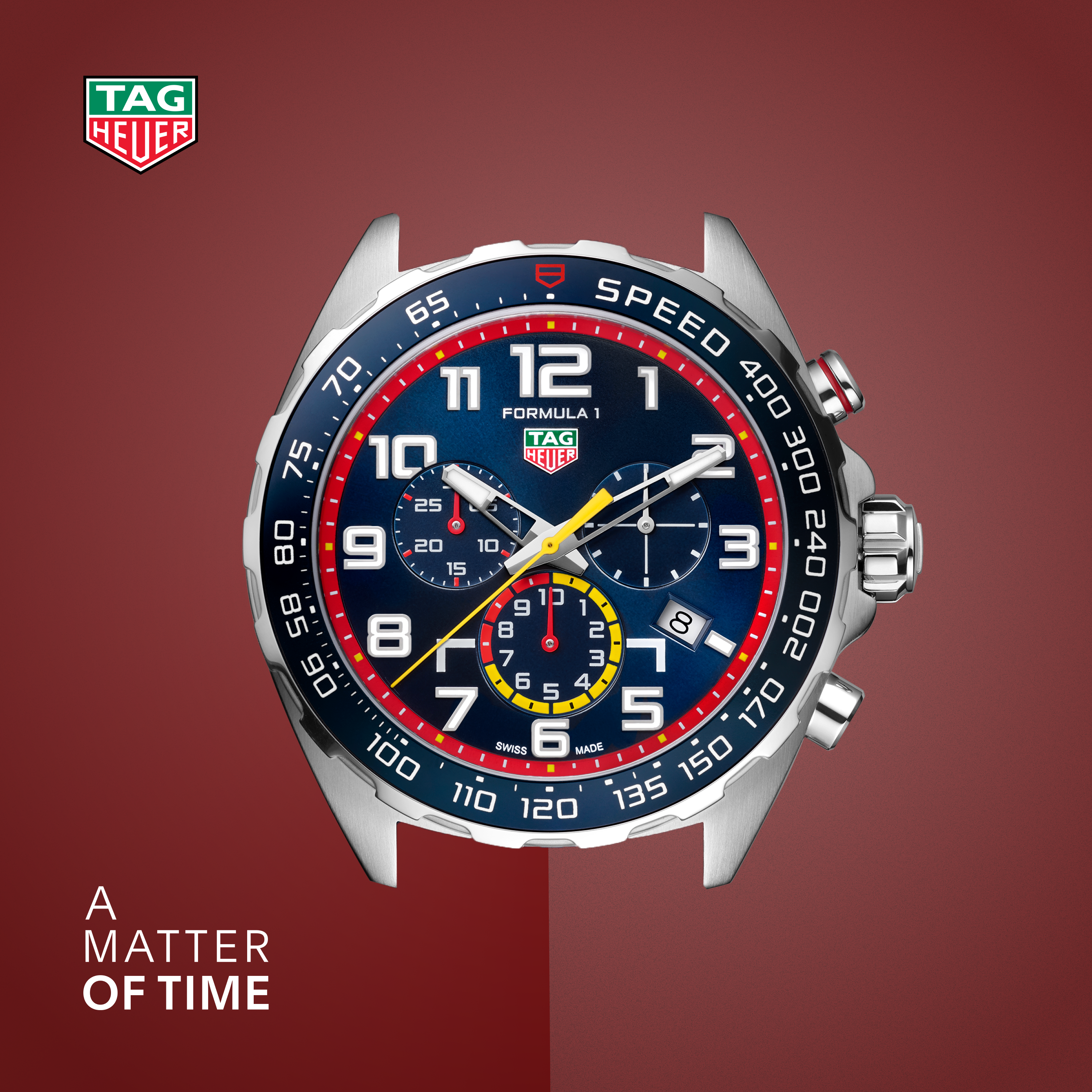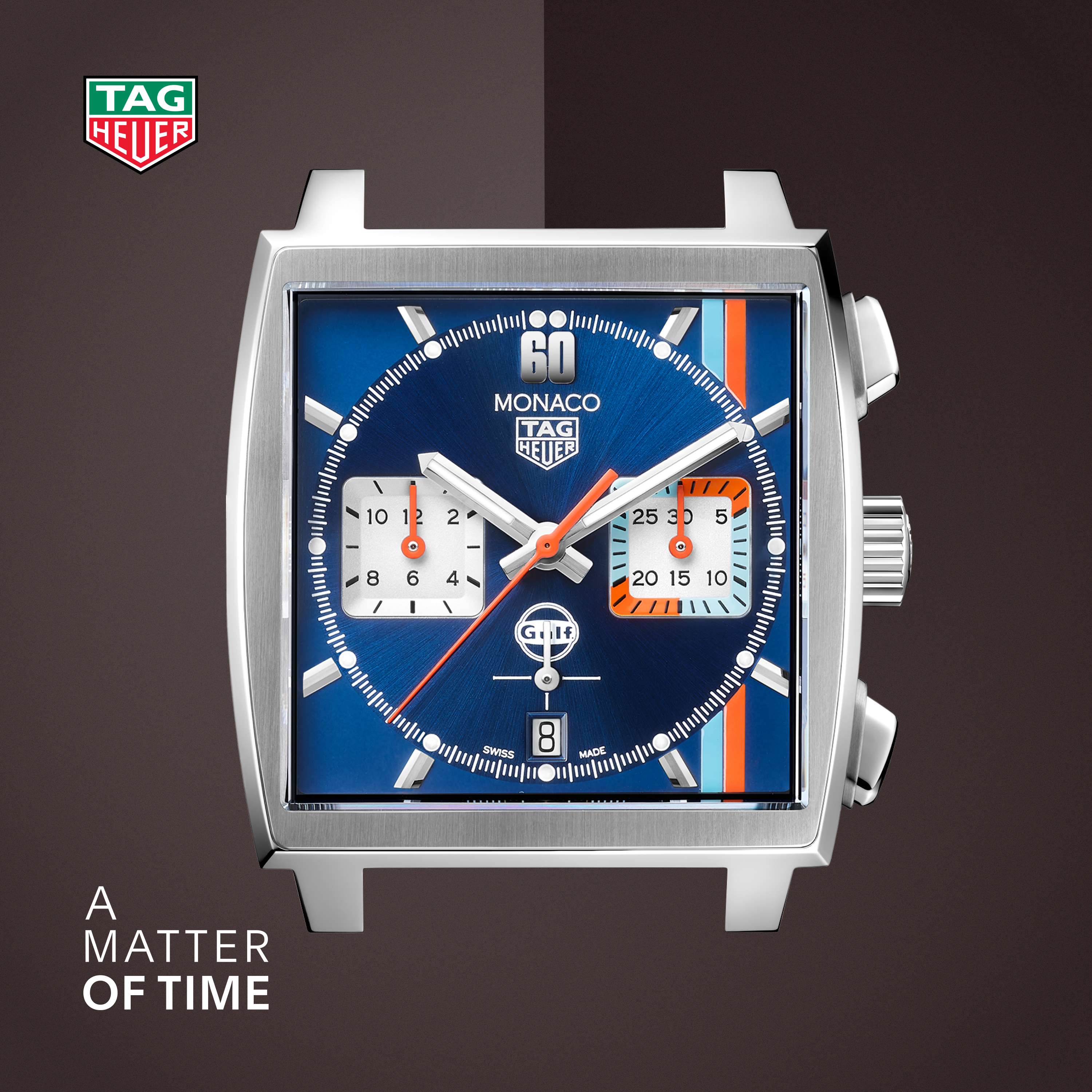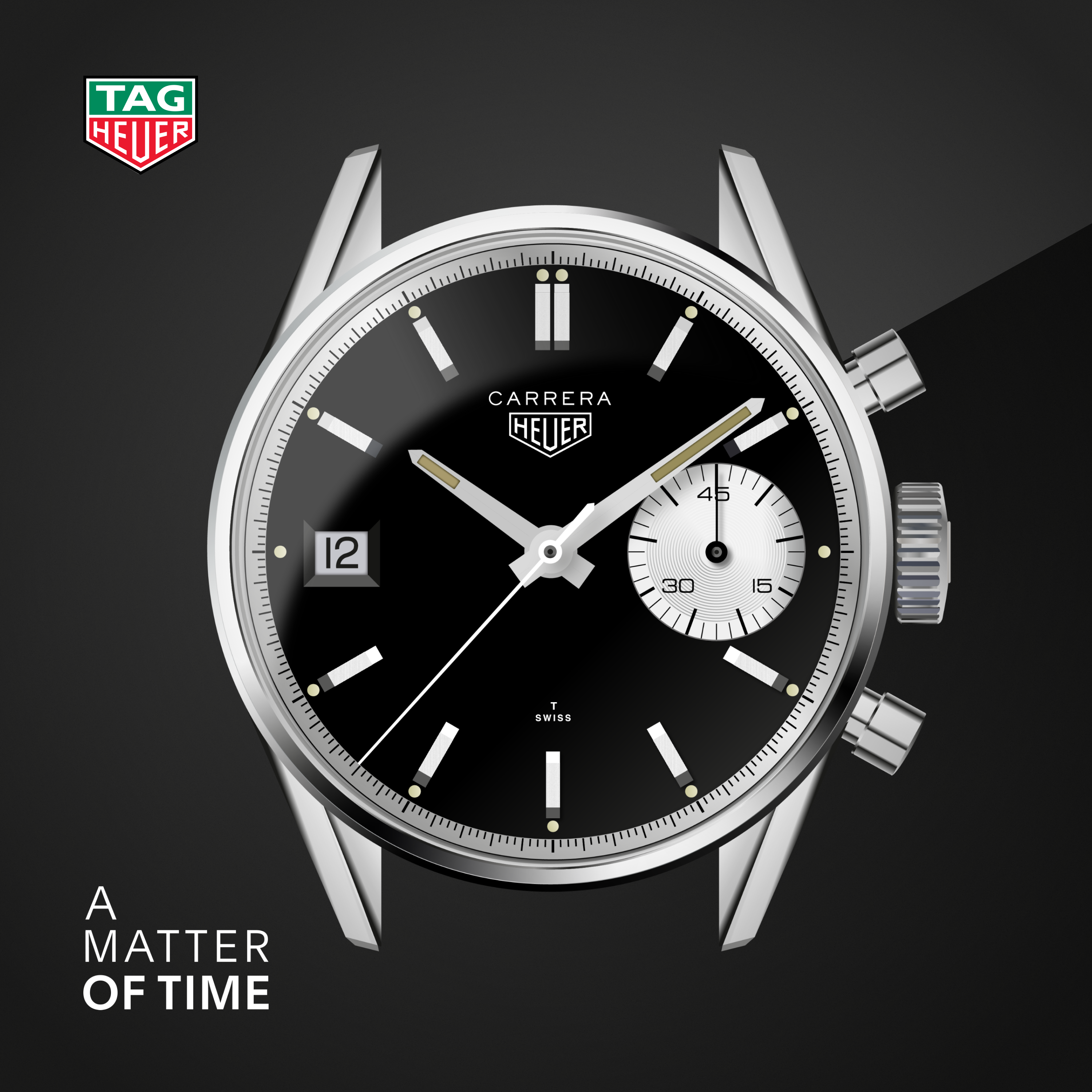[00:00:02] Welcome to a matter of time, a podcast by Tag Heuer. I'm your host, Nicholas Biebeck, heritage director at TAg Heuer and a passionate enthusiast for swiss watchmaking.
[00:00:17] In this series, I'll be sharing the history and stories attached to our most iconic models. And today we'll be discussing one of our great legends, the Monaco.
[00:00:27] In our first episode, we looked at the birth of the watch. The next step in the story takes us onto the reference 1133 B, nicknamed the Steve McQueen by collectors. And well be digging in to why the names Monaco and Steve McQueen have become inseparable decades after they were brought together.
[00:00:47] To begin this story, we need to take a step back in time. The year is 1970. We're at Circuit de la Sarthe, just outside of the city Le Mans in France, the home of the famous 24 hours race. Steve McQueen, a great connoisseur of cars and an enthusiast of motor racing, has been looking for an excuse to be able to take part in competition, even whilst he's filming.
[00:01:09] Normally, when he's committed to a movie project, the insurance won't let him take part in his great love of motor racing. So what does he do? He forms his own production company, Solar Productions, to commence a passion project. The name of the movie? Not so. Originally, Le Mans action.
[00:01:30] He's here to tell the trials and tribulations, blood, sweat and tears that get poured into a 24 hours race. A true test of endurance, not only for the machine, but for the men who are involved as well.
[00:01:43] It's like a contemporary form of the gladiatorial battles taking place in Rome, with cars fighting against each other for position on track over long periods of time. A real test of character and fortitude.
[00:01:56] It is around the race that Steve performs all of his own stunts and all of his own driving. Now, while Steve has great experience in other Porsche models prior to taking part in the filming of Le Mans, such as the the 356 and the 911, the 917 is a very different prospect. Truly a technological tour de force and the bleeding edge of mechanical engineering at the top flight of motorsport of the era. It requires deft skill and bravery to pilot this incredible piece of machinery.
[00:02:27] Looking for training, Steve enlists Derek Bell, the great british racing driver of the era, and Joe Siffert, already a Heuer ambassador and the crown prince of Freiburg, not far away from Heuer's factory in Ben, Switzerland.
[00:02:42] Steve forms a close relationship with the two drivers whilst they're educating him on how to control the 917. And when it comes time for the costume department to select his outfit. Steve simply says, I want to look like a professional. And here's Joe Sifford standing with me with his name embroidered on the chest, his stripes on his white racing suit and his hoya on the wrist. Joe looks every part the professional racing driver of the era. So it's no surprise that Steve uses him as his model for the character Michael Delaney, who he would star as in the movie Le Mans. Now, luckily, the prop master, who's engaged to collect together the timing equipment and watches for the movie set, has already been engaged by Jack Heuer in the past. Don Nunley. He calls up Jack and says, jack, we urgently need watches. Tiny equipment, stopwatches on set in Le Mans, Jack goes to the company cover to raid it and look for the pieces desired. And whilst Joe and Derek are both keen autavia enthusiasts, Steve ends up wearing a Monaco. And we have to wonder, how did this happen?
[00:03:46] And for me, it's one of my favorite parts of the company history. And it's really a shining example of how incredible the Monaco is and what it means historically and today.
[00:03:57] In the last episode, I described the Monaco as looking like an alien spaceship had landed something from 2001 as Space Odyssey. And it was very hard for the market to receive such a different design in the era. For me, I always think that when design is successful out the door, it's probably just fashion and it probably won't have lasting value. The Monaco was quite the opposite. People simply didn't understand what this brutalist lump of stainless steel with its bright blue dial represented.
[00:04:25] So whilst the Carrera and the autavia were performing very well, the Monaco was tough to sell. And Jack's told me personally, they were always happy whenever they sold a Monaco from the factory. They were so difficult to find a commercial reception for.
[00:04:38] But as we know today, the Monaco is one of the great pillars of Tag Heuer and has become a cult collector's item for many enthusiasts. And it goes to show that sometimes it takes decades for people to really understand what great design is, how important it is and what it means historically. And the Monaco is a perfect encapsulation of that.
[00:05:00] Back to Bien 1970. We're packing up watches to send to Le Mans and we have to get them there. So Jack enlists one of the employees of the firm to jump in his car with all of the watches with a pile of cash in the passenger seat to pay the customs officials as they they drive through. As he gets to Le Mans, he spends a bit of time with Steve McQueen, turns around and drives back home. To bien with the watches safely delivered.
[00:05:26] Now, what makes this watch so different from the very first series of the Monaco? It's really the dial in the early chronomatic versions that I've already described and a short transitional series, we see this bright blue metallic dial that has this sensation of sun rays on a warm ocean. Due to manufacturing challenges and degradations with the dials, it's quickly decided to move to this matte blue finish that has become so closely connected to not only the Monaco, but Steve McQueen, his character in Le Mans. The matte dial is this deep royal blue, conveying this feeling of strength and depth that is perfect for a character such as Michael Delaney. Now, Jack had pinned a lot of hopes on the success of the Monaco being attached to a project such as Le Mans and superstar actors such as Steve McQueen. But actually, at the time, the movie receives a lukewarm reception and it's not the commercial success that we're hoping for. So what should have been a dream for the company and a great opportunity for us to build strong sales for a model that was suffering in a key market such as North America? Has cold water poured all over it? And isn't the kickstart that it's need? In 1971, the movie is released and only a year later plans were already made for the Monaco to be discontinued. Truly an unfathomable idea today when we know how important the Monaco is to tag Heuer and how successful the product line has been for us. But this is a product of the era and it's amazing to think back and how times have changed so dramatically.
[00:06:56] I hope you've enjoyed today's story around the Monaco and its connection to Steve McQueen. I appreciate that it's not always easy to picture some of the watches and moments I'm describing, but if you visit our online
[email protected] we have a full article showing pictures of the watches described today.
[00:07:19] Thank you for listening. Please look forward to the next episode of a Matter of time, a tag Heuer podcast in which we'll be describing one of the most legendary Monaco's, the black coated version that was released in the late 1970s.
[00:07:32] I'm your host, Nicholas Bbeck. I'd love to hear your feedback and any comments you might have. Please do leave a review wherever you get your podcasts.


